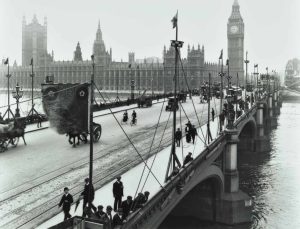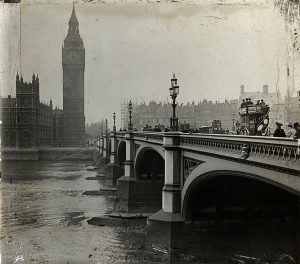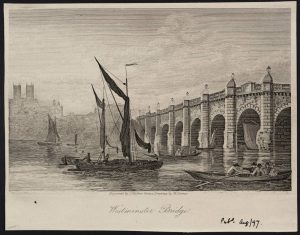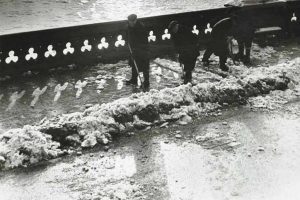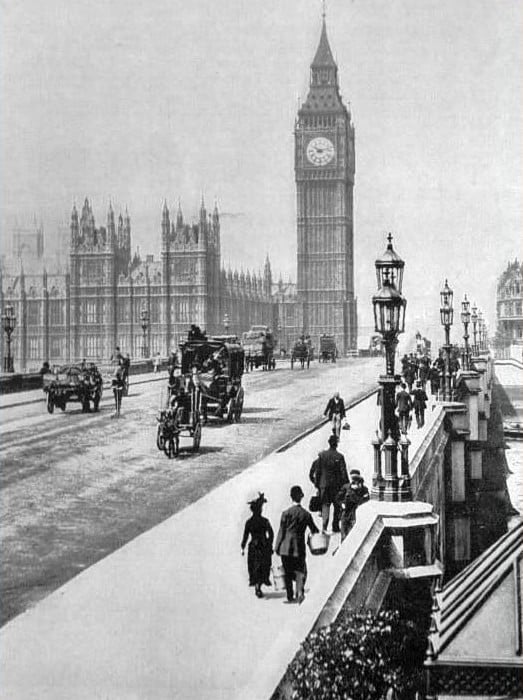
The original Westminster Bridge was of an elegant design. Spanning 1,223 feet of river, it was 44 feet in width allowing for wide pavements and the passage of three carriages abreast.
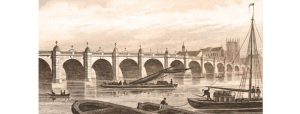
Until the early 18th century the only way to cross the River Thames downstream of Kingston was to pay to pass over London Bridge, or take a ferry or a water taxi. Any proposal to build a new bridge was immediately and vociferously opposed by the powerful forces of the City of London Corporation, which owned London Bridge, or the Company of Watermen, which upheld the monopoly of the ferrymen.
In 1664 a proposal was put to the Privy Council for a bridge to replace the horse-ferry between Westminster and Lambeth, backed by the MP for Westminster. It was opposed by the the Mayor of London, as well as the Archbishop of Canterbury who profited from the ferry. The City of London Corporation provided Charles II with a much-needed loan of £100,000 and the idea for the bridge subsequently went no further. Another proposal in 1721 had much the same fate, with petitions against it from the City of London, the Company of Watermen, the West Country Bargemen, the Borough of Southwark and the inhabitants of London Bridge. In 1726, however, Parliament was finally persuaded to pass an Act for the building of a bridge across the Thames between Fulham and Putney, for the convenience of travellers to the south-west.
As the suburbs immediately to the west of the City of London continually expanded during the late 17th and early 18th centuries ever greater numbers of people were inconvenienced in crossing the river. The matter was once more put before Parliament by the Earl of Pembroke and an Act finally passed in 1736 for the building of a new bridge, as well as various improvements on both sides of the river. It was agreed that the ferrymen would receive £25,000 in compensation and the Archbishop of Canterbury £21,000.

